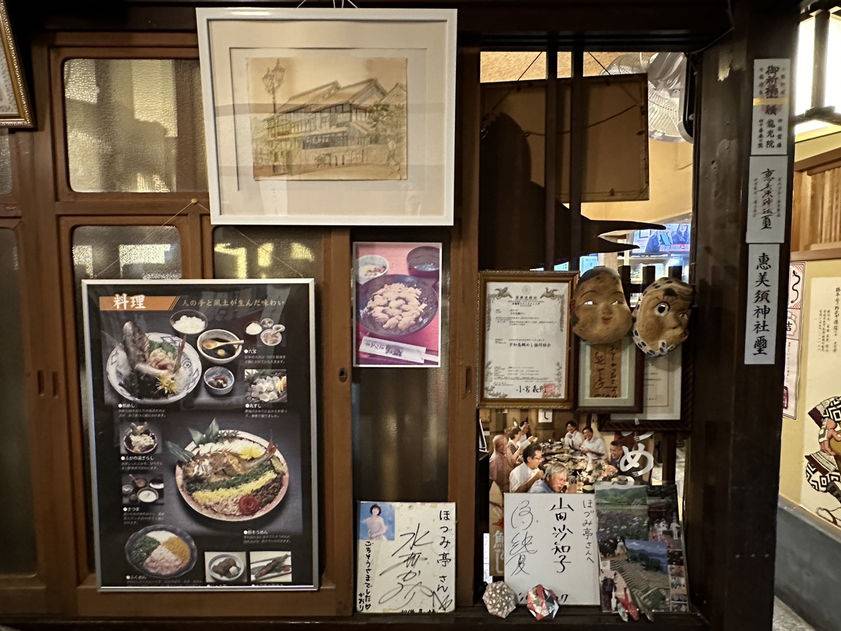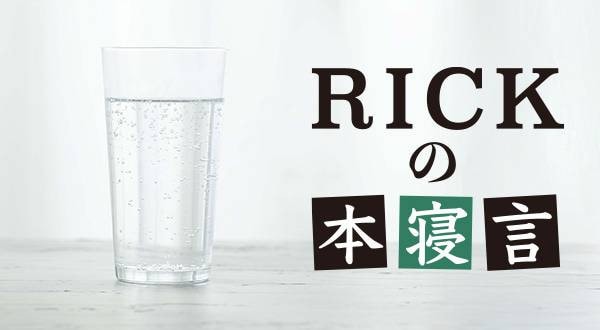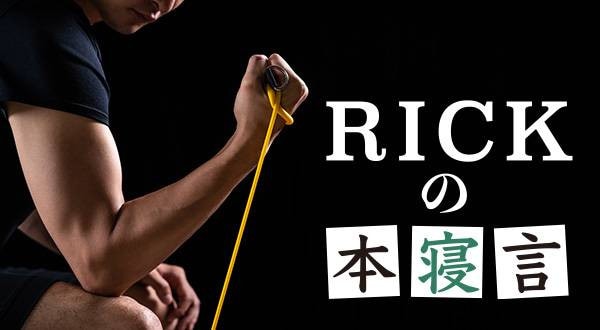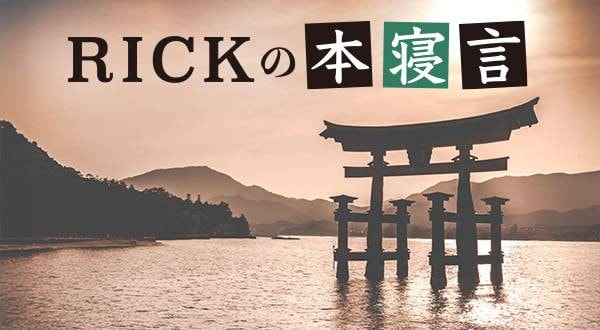14 days have passed since I did the 88 temple pilgrimage in Shikoku on my own. I have traveled a total of 711 km. For the remaining 8 days, I hope to visit all the 88 sacred sites, a total of 22 days, but I am not sure if my body will last that long. That is why I have no choice but to put my body through its paces, so I am working on my training every day. It may be difficult for non-runners to understand, but running long distances does not mean that you only have to train your legs by running on a regular basis. Without strength training for the entire body, including the abdominal and back muscles to support the entire body, it becomes difficult to run almost nonstop for 10 hours. Therefore, when I find free time, I work on muscle training, even if it is only for 30 minutes a day.
I have been training for more than half a century at least. I sometimes wonder how I can keep it up. But training has always made me feel fit, my body fat has remained in the 10% range, and I have never had a bloated belly, which is a good feeling. Once you experience the muscle tone and revitalization of your body, you will never forget that good feeling and you will always want to keep it up. That's why I encourage everyone to run. The secret to maintaining healthy aging is to keep your legs and feet strong and your entire body muscularly strong.
Now, let's get to the story.Running around the pilgrimage routes throughout Shikoku and visiting towns along the way led me to meet many people. Through these encounters, I sometimes suddenly sensed a difference in the character of the people of the prefecture. It is often said that Tokushima people tend to be closed off. As a visitor to Tokushima from outside the prefecture, I have certainly experienced this on many occasions. To put it simply, many people have told me point blank, "Strangers are not welcome here.”
There seem to be many reasons for their exclusivity. I believe that perhaps this is a sign of a lack of confidence in our own existence. If we have confidence in our existence and self-esteem, then we can always maintain a proactive attitude and we will not be affected by what others are doing around us. Since they know the value of their own existence, they are able to deal with people around them in a very normal and sometimes kind manner, taking into consideration the situation. In other words, if Tokushima people are exclusive, it is a sign that they lack confidence in themselves. Perhaps they have a sense of inferiority stemming from a low level of education or a sense of isolation stemming from a lack of knowledge of Japan outside the prefecture may also be a factor. I would like the people of Tokushima to have more self-confidence.
Compared to Tokushima, Ehime's citizens seem to be a bit more open and generous to outsiders. Although I am still at the beginning of my journey going in and out of Ehime, unexpectedly, many of the people I have met have been very kind, and I have found it easy to talk to them, and it’s not only a few who are willing to talk to me. It also seems that they look at me with some respect because I have been on the pilgrimage, and I am happy to see people greeting me as I pass them everywhere I go. The fact that the younger generation, especially teenagers, have been well educated enough to greet people, makes me see them in a warm light.
So, back to the story. The 14th day of the pilgrimage tour had finally arrived. I had already conquered the long run of 86 km to Ashizurimisaki, which is known to be a difficult challenge. Then I turned around and ran the 125 km from Cape Ashizuri to Sukumo and Uwajima in two days. Thus, on the 14th day, I will take on the challenge of a 50-km run from Uwajima to Iyo-Oshima at the western end of Shikoku. Beyond that, a tough mountain road to the 44th of the 88 temples, ShikokuDaibo-ji,, was waiting for me.
On March 28, I flew out of Haneda Airport to Matsuyama Airport a little after 3:00 p.m. From JR Matsuyama Station, I took a train to Uwajima. I arrived at Uwajima station at exactly 19:00 pm. I immediately attended a Zoom meeting for work and then headed to Hozumi-Tei, a restaurant I had reserved in advance, to get ready for the 50-kilometer run the next day. When I arrived in Uwajima last week, I had hoped to dine at Hozumitei for the evening, but the restaurant was full and I could not get in. Since Hozumitei is the most popular izakaya in Uwajima and its reputation for delicious food is well known through word of mouth, I was determined to have a meal there.
A spacious seat was available at the counter, and I decided to sit there and look at the menu. Delicious-looking items were lined up in a row. I immediately decided to have the small boiled shrimp with salt for 450 yen, pickled fish for 380 yen, and an assortment of sashimi for one person. The pickled dish was so cheap that I wondered what the ingredients were, and was surprised to find that it was a seaweed salad marinated in vinegar, but it was still delicious. It went really well with beer. While I was enjoying my delicious meal, I asked this waitress who was passing behind me to order some more water and sake, and she came over to talk to us.
At first glance, she appeared to be an elderly lady in her 70s, but it was immediately apparent that she was hard at work serving food and had a strong work ethic. As I listened to her talk, I immediately got the impression from the way she spoke that she was the owner of the restaurant. She is a lovely woman, so I will refer to her as "auntie," as I am accustomed to doing. When we talked about my pilgrimage to Iyo-Oshu via Ryuko-ji and Butsugi-ji temples, she suddenly started talking about Kukai. Of course, I was eating at the counter, so she started talking to me from behind the counter to my left.
According to auntie, there is a local tradition of celebrating Kukai, and in fact, Kukai wanted to make Kushima a sacred place. Today, Kushima is connected to Uwajima by the Kushima Bridge, making it easy to come and go. However, in ancient times, there was a time when Kushima was considered a sacred place. One day, however, a bird called "cock-a-doodle-doo," and Kukai realized that the place of worship was not Kushima, so he moved on to Ryuko-ji and Butsugi-ji. It is indeed an interesting story.
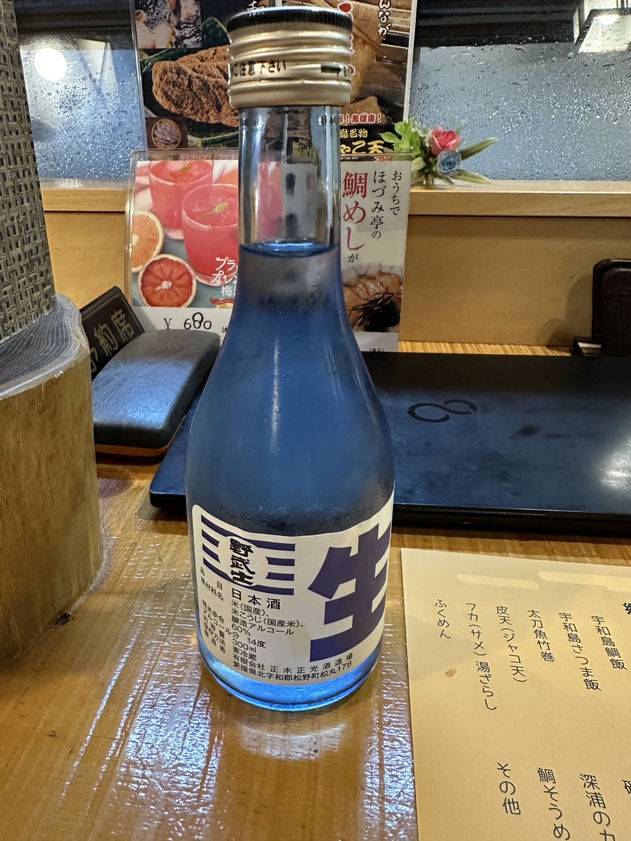
From there, the conversation with auntie grew even more lively, and we talked about sake. Hozumi-tei has a large selection of local sake from Ehime. Since Ishizuchi is the most popular sake in Ehime, we decided to start with Ishizuchi junmai sake. The customer next to me was drinking a 300 ml bottle of “Iyo no Koigokoro” on draft. The menu said Uwa-machi, so I asked the lady if Iyo no Koigokoro was a famous local sake. In fact, a map showed that the brewery was located in the Uwa Basin, about 20 km to the north. As we continued to talk about sake, we talked about a brand called "Nōmushi," which is the restaurant's top recommendation.
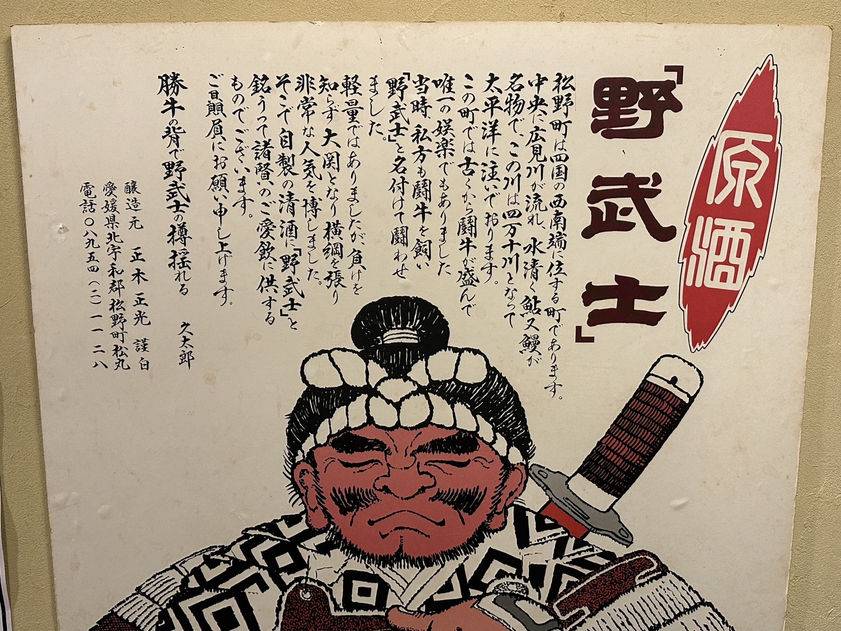
Nōbushi's sake brewery is located in Matsuno Town, which is adjacent to Uwajima. According to auntie, even today, Matsuno Town and its neighbor Onikita Town do not get along well, so much so that there was talk of merging the two towns before, but they could not come to an agreement on where to put the town hall, and the two towns ended up parting ways. Originally, the men of Matsuno were samurai, but as time went by, they were forced to become farmers. Even so, everyone still felt that "we are samurai, we are Nōbushi.” This pride and feeling is reflected in the "Nōbushi" brand of sake. The signboard at the store reads, "Bullfighting has been popular in this town for a long time and was the only entertainment. At that time, we also kept a fighting bull and named him Nōbushi. It is likely that the sake was made with the desire to fight and it also became their home-brewed sake.
I had a lot of fun talking about everything with Auntie. I am sorry for keeping the auntie to myself. Later, I asked the staff if she was the owner of the restaurant, and they told me that she was the mother of the president of Hozumi-Tei. Oh, how I wish I could go back to Hozumi-Tei and talk with her more often! It was fortunate that we were able to enjoy such a friendly moment the night before the 50 km run to Iyo-Oshima. Indeed, the 50 km run the next day was a very tough one with mountain crossings, serious mountain trails, long uphills, and within a time limit. Still, it was moments like these that made me realize how glad I was to come to Ehime. There are still 500 km of the pilgrimage route left to go, and I will continue to ganbaru.
